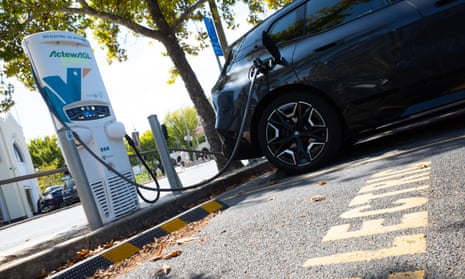Extract from The Guardian

Electric vehicles in Australia are on the move. Last month marked a milestone in that the country finally has a National Electric Vehicle Strategy to call its own.
Although criticised for not having enough teeth, there’s still plenty of positives. It’s also a signal to the market, business and the car-driving public that Australia is ready to join the rest of the developed world in getting serious about cleaning up its highly polluting vehicle fleet.
The states have been on the case for a while, with all having some form of EV strategy already in place. Queensland even trumped the ACT (to date the most progressive and ambitious in Australia when it comes to EV policy) in the last few days by announcing the most generous Australian EV incentive yet.
The list of EVs on sale here in Australia is steadily growing and features established brands most of us would recognise. BMW, Hyundai, Kia, Mercedes, Mini, Volvo, Porsche, Nissan, Audi, LDV, Mazda and Jaguar all sold electric models in March.
However, there is one major carmaker conspicuously absent from this list.
Despite being Australia’s top-selling auto manufacturer and an early leader in hybrid petrol-electric vehicles, Toyota has been late to the party for full battery electric models.
It seems strange to think that Toyota, with its reputation for innovation, customer satisfaction and continual improvement, is dragging its feet on electrification.
Toyota’s Australian VP for sales and marketing this week claimed that EVs are just not quite ready for the demands of Australians. To explain this stance, some might point to Toyota’s dominant position in petrol and hybrid sales and assume any push to encourage electric vehicle adoption would threaten its stronghold on the market.
With Toyota only just bringing its first serious attempt at a full battery electric model range to global markets now, a few might wonder if product research and development issues could have led to a stuttering start.
In 1997, Toyota launched the Toyota Prius (Prius meaning ‘to go before’ in Latin) – the world’s first hybrid electric-petrol drivetrain. To date, it has sold 5 million in over 90 markets before being discontinued in Australia last year. Since then, Toyota continues to sell 2.6m hybrids a year in addition to 6.8m internal combustion engine vehicles.
Toyota has also been a long supporter of another type of electric vehicle – hydrogen fuel cell electric vehicles. However, sales of these have remained stubbornly low (around 5,000 last year) and geographically confined to where some limited refuelling infrastructure has been installed.
Maybe someone needs to remind Toyota that if we don’t move to only zero-emission vehicles, we won’t be able to decarbonise our transport sector and will increase the risk of incurring the very worst climate change has to offer. The IEA is quite clear in identifying EVs (not the hydrogen-fuelled kind) as the key technology to decarbonise road transport, a sector that accounts for around a sixth of global emissions and Australia’s third biggest source.
“EVs can’t tow” is a trope wheeled out by former prime minister Scott Morrison, and it’s looking more antiquated by the day. While Australia is still waiting for the same supply of electric utes as the US, the recently arrived LDV model has a towing capacity of three tonnes, which is more than enough for most caravans. Models available in other countries, such as the Ford F-150 Lightning, come with a whopping 4.5 tonne capacity. Besides, many Australian EV owners already tow their trailers and jet skis safely using tow kits available from manufacturers and aftermarket providers.
In terms of cars used for work, many business fleets (which make up over half of new cars sold in Australia) are seeking to electrify their fleets due to their lower running costs and emissions and their positive impact on air pollution, drivers and corporate image.
We’re also seeing farmers and miners embrace electric vehicles. This year, the Australian commercial EV-maker SEA Electric signed a deal with the mining sector to convert 8,500 Toyota HiLux and LandCruiser vehicles to electric by 2028. A trial is also under way with farmers in regional Victoria, looking at how electric vehicles can make a major dent in farm running costs and emissions compared with diesel alternatives.
Of those EVs available in Australia today, most are capable of between 250km and 300km between charges and this will only improve as EV technology matures. Australia’s low population density means some do have to regularly travel long distances through thinly populated areas. However, the vast majority of Australians make short trips, with an average journey of only 35km a day. Recent analysis by a group of Australian researchers has also shown that over 99% of communities and residents in remote areas would be able to travel and charge sufficiently with existing long-range EVs.
Yes, we need more models that appeal to more people. Yes, we need more variety than just SUVs. Yes, we need lower price points. And more charging stations, and for more businesses and industries to adopt them.
But if there are no EVs out there that do the job for your customers, maybe you should just build some.

No comments:
Post a Comment